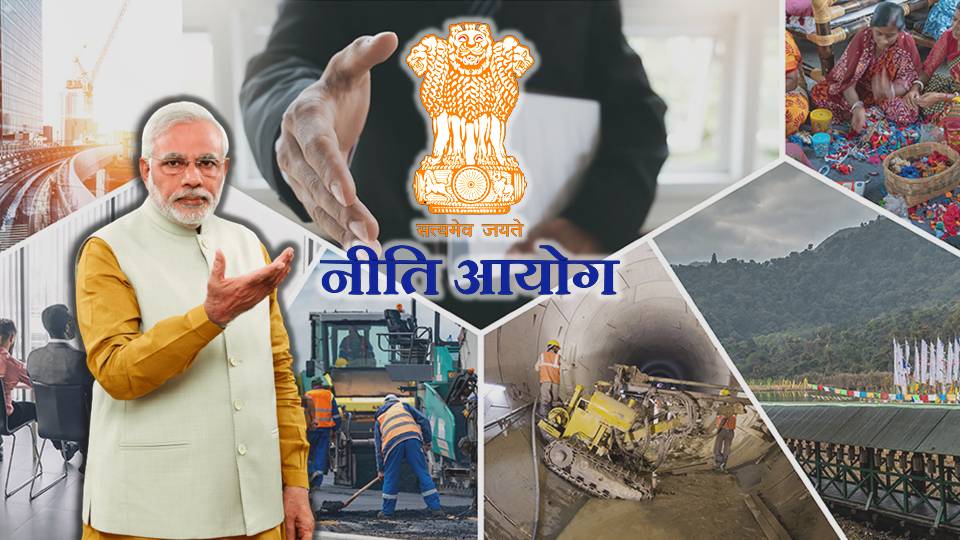When India was freeing itself from the clutches of colonial rule, its economy and society were in a totally dilapidated state. Largely influenced by the socio-economic revolution of Russia, India too chose to advance its development with a centralized trickle-down approach. As envisaged, a Planning Commission (PC) was established on 15 March 1950, under the direct authority of the Prime Minister, without any constitutional or statutory obligations.
But, the administrative inefficiency and political implications did not let the Commission rise above the politics. The highly political and highly centralized system, created to catalyze socio-economic development, itself became an impediment to the growth of the country. Moreover, maintaining the legacy of Pandit Nehru, the successive Congress governments never intended to bring reform to the institutions. The salvation of the Planning Commission came on 13 August 2014, when Prime Minister Modi announced the scrapping of the body. So, on 1 January 2015, NITI (National Institution for Transforming India) Aayog came into the picture replacing the Planning Commission.
The fundamental change in the working of PC and NITI Aayog
The Planning Commission was built to synergise the planning and program of the government, considering the limited resources. But, the organizational structure and system of governance made this a powerful political body, and an essential feature of smart planning was eliminated from the Commission.
NITI Aayog, on the other hand, is a highly democratic and solely think-tank body. Unlike the Planning Commission, NITI Aayog’s Governing Council is composed of all the Chief Ministers and lieutenant governors. Full-time organizational structure with a Vice Chairperson and Chief Executive Officer, the Aayog envisages making the Government ‘an enabler of growth’ rather than ‘a provider of first and last resort’.
Also Read: NITI Aayog provides roadmap to take the Indian economy to $4-trillion by 2022
NITI Aayog – The smart policy makers
With the aim to enable India to better face complex challenges, NITI Aayog, in the last 7 years, has emerged as a forerunner in smart policy-making. Mastering the resource manoeuvring technique, the Aayog has helped the country to derive smart policies to fight the 21-century problems with 21st-century smart ideas.
Based on the democratic ideal of a bottom-up approach, the Aayog envisaged targeting highly backward districts of the country for development initiatives. Based on various socio-economic parameters, they categorised 112 Aspirational Districts, for the targeted delivery of welfare services. Under the five foundational parameters like Health and Nutrition, Education, Agriculture, and Water Resources, Skill Development and Financial Inclusion, and Basic Infrastructure, they created a competition for development amongst districts by recognizing performance-based rankings. Further, with the collaboration community, civil society, NGOs, and governments, District-specific issues are categorised and effort is being launched to target those deficiency areas.
Aligned with the United Nations Sustainable Development Goals (SDG), NITI Aayog aims to create a sustainable business environment in India. Releasing the businesses from the government’s functioning, the Aayog has envisaged Asset Monetisation Program. With innovative disinvestment instruments like InvITs (Infrastructure Investment Trusts) and REITs (Real Estate Investment Trusts), the NITI was able to collect around Rs 1,10,000 crore much above the targeted Rs 80,000 crore. This helped the government in stimulating the budget deficit in constraint Covid times.
One of the fundamental policies, which have ignited the manufacturing base in India, is the NITI’s envisaged Production-Linked Incentive (PLI) Scheme. The policy aims to incentivize incremental production for a limited number of eligible anchor entities in the selected sectors like textiles, specialty steel, drones, automobiles, solar modules, white goods, food processing industry, telecom, IT hardware, medical devices, and other essential products. It has the potential to create about 60 lakh new jobs and additional production of Rs 30 lakh crore in the next five years.
Women and Children constituent about 50% of the total population of India. To ensure their good health, NITI Aayog envisages Poshan Abhiyan and Pradhan Mantri Matru Vandan scheme to accelerate the nutrition programs for Children and women. The other key nutritional scheme in the pipeline is the Rice Fortification. It will further ensure the targeted social safety net for women and children.
To provide institutional support to startup ideas and promote the culture of innovation and entrepreneurship in the country, NITI Aayog carved out the Atal Innovation Mission (AIM). Under the AIM, various Atal Tinkering Labs, Incubation Centres, Community Innovation Centre, Research and Innovation for Small Enterprises, and Mentor India Campaigns are launched to create an umbrella structure for innovation in India.
Mastering the Performance-Based Budget Program, NITI Aayog launched various indices to promote competitive federalism. The developmental indices, which mark the rankings of states, are the Composite Water Management Index, National Gender Index, India Innovation Index, National Multidimensional Poverty Index, School Education Quality Index, State Energy and Climate Index, Sustainable Development Goals India Index, and State Health Index. These rankings not only help in democratisation data to formulate smart policies but also energize the competitive federalism in the country.
Above all, NITI Aayog has been successful in bringing state governments to the table, to promote cooperative federalism. Working on the ‘Team India’ philosophy, every state, and its unique demand has been taken into consideration while formulating any policies. States themselves being the Governing Council members of the Aayog has further reduced the confrontation of state and centre on policy issues. And, NITI Aayog has emerged as the common platform for debate, discussion, and deliberations, which forms the core value of a healthy democracy.
Support TFI:
Support us to strengthen the ‘Right’ ideology of cultural nationalism by purchasing the best quality garments from TFI-STORE.COM
